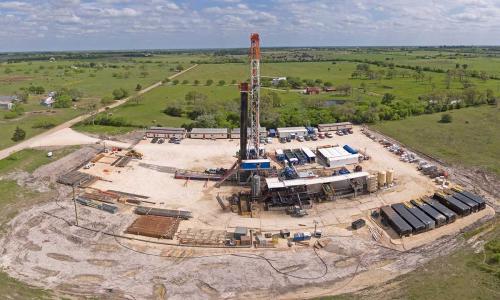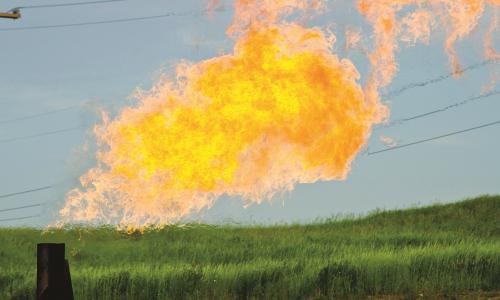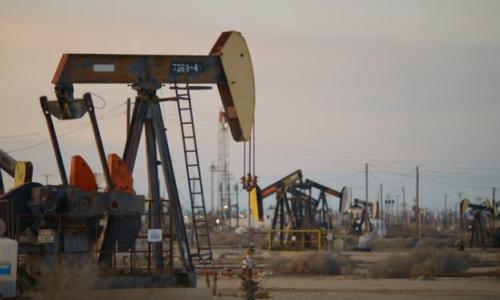Natural gas is a versatile fossil fuel that we use for heating, cooking, electricity production, transportation, and as an industrial feedstock. In 2012, it made up 30 percent of the U.S. energy mix, and it continues to be a readily available domestic resource as a result of recent discoveries and advances in extraction technology. [1]
You can learn more about natural gas in the following comprehensive suite of pages, which detail the many aspects of natural gas, from formation to extraction to end use, including associated environmental impacts.
How natural gas is formed
Natural gas is a product of decomposed organic matter, typically from ancient marine microorganisms, deposited over the past 550 million years.
After natural gas forms, it will tend to rise towards the surface through pore spaces in the rock. Most often, gas deposits are found in association with oil reservoirs, with the gas either mixed with the oil or buoyantly floating on top.
Shale gas and other unconventional sources of natural gas
Unconventional natural gas, which includes shale gas, tight gas, coal bed methane, and methane hydrates, has been more difficult and costly to exploit than conventional deposits—but the economics are changing. Hydraulic fracturing (or "fracking") has made some of these sources much easier to access than ever before, changing the character of energy markets and complicating our efforts to respond to climate change.
Natural gas flaring, processing, and transportation
The United States has an extensive and complex network of natural gas wells, processing facilities, and pipelines. In addition to safety concerns, natural gas leaks from wells, as well as transmission and distribution pipelines, are a significant source of global warming emissions.
Uses of natural gas
Natural gas is a versatile and efficient fuel that is used in a wide variety of applications, including electricity generation, heating, and industrial uses. Because of this, changes in natural gas demand in one use (say, power plants) can directly influence the price of it in other uses (home heating or industry).
Environmental impacts of natural gas
Natural gas has a range of potential environmental impacts associated with its extraction, transportation, and combustion, including water use and pollution, global warming emissions, effects on land use and wildlife, and air pollution. Understanding and mitigating these impacts is crucial for responding to the climate crisis.
The future of natural gas
Despite significant environmental concerns associated with its extraction, production, and distribution, natural gas burns more cleanly than coal and oil and therefore offers advantages in reducing emissions and improving public health. However, natural gas is a fossil fuel whose emissions do contribute to global warming, making it a far less attractive climate solution than lower- and zero-carbon alternatives such as energy efficiency and renewable energy.
Furthermore, new research suggests that methane leakage during the extraction and distribution of natural gas may be undermining the potential to reduce global warming emissions by using natural gas in place of higher-carbon fossil fuels such as coal and oil. And new horizontal drilling and hydraulic fracturing (or “fracking”) techniques that have allowed domestic gas and oil production to expand rapidly over the past decade have raised new questions about the impacts that natural gas extraction and use will have on climate change, public health and safety, land and water resources, and people. This expansion is currently outpacing our capacity to understand and manage the attendant risks.
During our nation’s transition to a low-carbon energy future, natural gas can play an important but limited role in the electricity and transportation sectors — if policies sufficient to minimize emissions and protect communities and public health are put in place.
References:
[1] Energy Information Administration. 2012. Electricity Data Browser. Net Generation for All Sectors.








